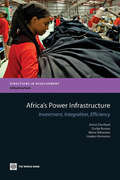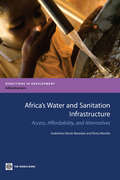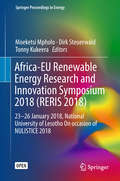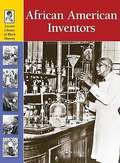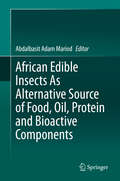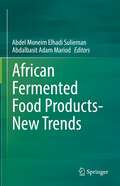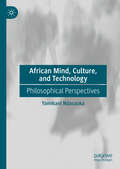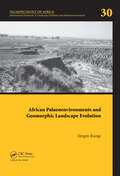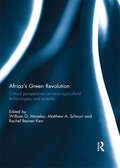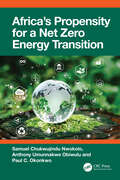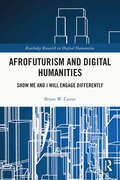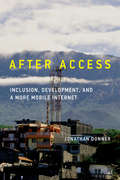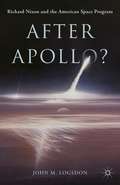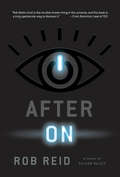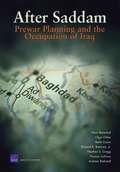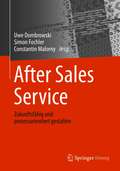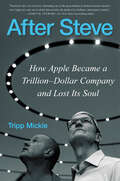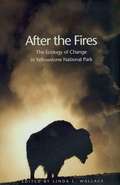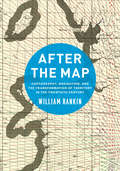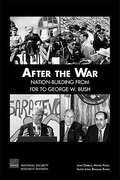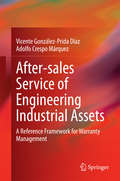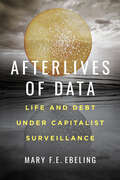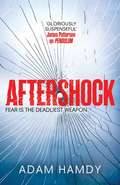- Table View
- List View
Africa's Power Infrastructure
by Anton Eberhard Orvika Rosnes Maria Shkaratan Haakon VennemoAfrica's chronic power problems have escalated in recent years into a crisis affecting 30 countries, taking a heavy toll on economic growth and productivity. The region has inadequate generation capacity, limited electrification, low power consumption, unreliable services, and high costs. It also faces a power sector financing gap on the order of $21 billion a year. It spends only about a quarter of what it needs to spend on power, much of this on operating expenditure required to run the continent's high-cost power systems, leaving little for the huge investments needed to provide a long-term solution. Further development of regional power trade would allow Africa to harness larger scale more cost-effective energy sources, reducing energy system costs by $2 billion a year and saving 70 million tons of carbon emissions annually. Economic returns to investments in cross-border transmission are particularly high. But reaping the promise of regional trade depends on a handful of major exporting countries raising the large volumes of finance needed to develop generation capacity for export. It would also require political will in a large number of importing countries that could potentially meet more than half their power demand through trade. Power sector inefficiencies are high, deterring investment in new capacity and electrification. There are three types of sector inefficiencies. First, there are utility inefficiencies, which include system losses, under-collection of revenue and over-manning. These result in a major waste of resources adding up to $4.40 billion a year. Under-collection is the largest component of utility inefficiencies amounting to $1.73 billion, following by system losses at $1.48 billion and by over-manning at $1.15 billion. The second type of sector inefficiency is under-pricing of power. By setting tariffs below the levels needed to cover the actual costs, SSA countries forego revenues of $3.62 billion a year. The third type of inefficiency is poor budget execution. Only 66% of the capital budgets allocated to power are actually spent, with about $258 million in public investment earmarked for the power sector being diverted elsewhere in the budget. Full cost recovery tariffs would already be affordable in countries with efficient large scale hydro or coal-based systems, but not in those relying on small scale oil-based plants. Once regional power trade comes into play, generation costs will fall, and full cost recovery tariffs could be affordable in much of Africa. One of the key policy challenges is to strengthen sector planning capabilities, too often overlooked in today's hybrid markets. A serious recommitment to reforming state-owned enterprises should emphasize improvements in corporate governance more than purely technical fixes. Improving cost recovery is essential for sustaining investments in electrification and regional power generation projects. Closing the huge financing gap will require improving the creditworthiness of utilities and sustaining the recent upswing in external finance to the sector This book is based on extensive data collection undertaken between 2006 and 2008 by the Africa Country Infrastructure Country Diagnostic, an initiative of the Infrastructure Consortium for Africa delegated to the World Bank under the guidance of the African Union, African Development Bank and other multi-lateral and bilateral development institutions.
Africa's Water and Sanitation Infrastructure
by Sudeshna Ghosh Banerjee Elvira MorellaThe welfare implications of safe water and sanitation cannot be overstated. The economic gains from provision of improved services to millions of unserved Africans in enormous. The international adoption of Millennium Development Goals brought the inadequacies of service provision sharply into focus. With only 58% and 31% enjoying access to water and sanitation services respectively, Sub-Saharan Africa is the only continent that is off-track in achieving the MDGs in 2015. The problem is compounded by the fact that a rigorous and credible baseline did not exist on coverage to improved water and sanitation and resources required to meet the MDGs. This book aims to contribute to this gap by collecting a wealth of primary and secondary information to present the most up-to-date and comprehensive quantitative snapshot of water and sanitation sectors. The book evaluates the challenges to the water and sanitation sectors within the urban and rural areas and deepen our understanding of drivers of coverage expansion in the context of financing, institutional reforms, and efficiency improvements. Finally, the book establishes the investment needs for water and sanitation with a target of meeting the MDGs and compares with the existing financing envelopes, disaggregated by proportions that can be recouped by efficiency gains and net financing gaps. The directions for the future draw on lessons learned from best practices and present the menu of choices available to African countries. There is no recipe book that neatly lays out the possible steps the country should adopt to enhance coverage and quality of service. The challenges differ to a significant extent among African countries and solutions must be tailored to individual national or regional conditions.
Africa-EU Renewable Energy Research and Innovation Symposium 2018: 23–26 January 2018, National University of Lesotho On occasion of NULISTICE 2018 (Springer Proceedings in Energy)
by Moeketsi Mpholo Dirk Steuerwald Tonny KukeeraThis open access book presents the proceedings of the 2nd Africa-EU Renewable Energy Research and Innovation Symposium (RERIS 18), held in Maseru, Lesotho in January 2018. The symposium aimed to foster research cooperation on renewable energy between Africa and Europe – in academia, as well as the private and public sectors. Addressing thematic areas such as• Grid-connected renewable energy;• Decentralised renewable and household energy solutions;• Energy socioeconomics; and• Promotion of energy research, innovation, education and entrepreneurship,the book brings together contributions from academics and practitioners from the EU and Africa to enable mutual learning and knowledge transfer – a key factor in boosting sustainable development in the African renewable energy market. It also plays a significant role in promoting African renewable energy research, which helps to secure energy supply in both rural and urban areas and to increase generation capacities and energy system resilience. This book is an invaluable resource for academics and professionals across the renewable energy spectrum.
African American Inventors (Lucent Library of Black History)
by Stephen CurrieThis survey of African-American inventors includes some familiar names, but more whose names are less recognizable than their work. The stories of these bright and ambitious individuals are about science, technology, and individual discovery, but also about what it means - and what it has meant - to be black in the United States. Profiles of the most prominent inventors during each era of American history illustrate how blacks were viewed in society, as well as how they perceived themselves and how they functioned as a community through time.
African American Scientists and Inventors (Major Black Contributions from Emancipat)
by Tish DavidsonSome of them were elementary school dropouts. Others became medical doctors or college professors. Some were famous, while some toiled in obscurity. Some became rich. Others remained poor their whole lives. But the African-American scientists and inventors profiled in this book had one thing in common: a determination to succeed. And in pursuing their dreams, these creative thinkers made the world a better place. Lewis Latimer devised a manufacturing process that made electric lights affordable for ordinary people. Charles Drew did pioneering work in blood storage, helping save countless lives. Garrett Woods figured out how to send messages from moving trains. Learn about these and many other black scientists and inventors in this fascinating book.
African Edible Insects As Alternative Source of Food, Oil, Protein and Bioactive Components
by Abdalbasit Adam MariodThe harvesting, processing and consumption of edible insects is one of the main keys to the sustainability of food chains on the African continent. Insects are the largest and most successful group of animals on the planet and it is estimated that they comprise 80% of all animals. This makes edible insects extremely important to the future survival of large populations across Africa and the world. Insects offer a complete animal protein that includes all 9 essential amino acids and are very competitive with other protein sources. They are also a good source of beneficial unsaturated fats, and many insects have a perfect Omega 3:6 balance. African Edible Insects As Alternative Source of Food, Oil, Protein and Bioactive Components comprehensively outlines the importance of edible insects as food and animal feed and the processing of insects in Africa. The text also highlights indigenous knowledge of edible insects and shows the composition and nutritional value of these insects, plus presents reviews of current research and developments in this rapidly expanding field. All of the main types of edible insects are covered, including their nutritional value, chemical makeup, and harvesting and processing details. The various preparation technologies are covered for each insect, as are their individual sensory qualities and safety aspects. A key aspect of this work is its focus on the role of insects in edible oils and gelatins. Individual chapters focus on entomophagy in Africa and the various key aspects of the continent's growing edible insect consumption market. As it becomes increasingly clear that the consumption of insects will play a major role in the sustainability of food chains in Africa, this work can be used as a comprehensive and up-to-date singular source for researchers looking for a complete overview on this crucial topic.
African Fermented Food Products- New Trends
by Abdalbasit Adam Mariod Abdel Moneim Elhadi SuliemanFermented foods play a major role in human nutrition and health, given the addition of flavor, improvement of texture, preservation against spoilage, and ease of digestion due to the fermentation process. This book provides information about the chemistry and bioactive compounds of African fermented food products, including their nutritional value and minor constituents. Chapters cover a wide range of topics, from the microorganisms involved in spontaneous fermentation to food safety considerations and quality assessment. The text can be used as a practical manual to better understand the nutritional and medicinal uses of various African fermented foods, as well as prepare recipes and product labels.
African Mind, Culture, and Technology: Philosophical Perspectives
by Yamikani NdasaukaThis book provides a philosophical investigation of technology in Africa, articulating conceptual foundations and analyses rooted in African worldviews and communitarian values. It aims to spur discourse and understanding of how technology can be justly shaped for human advancement in Africa. Yamikani Ndasauka highlights the need to understand African conceptions of existence, ethics, and values as foundations for envisioning more humanistic technological applications. A historical contextualisation traces the layered origins of African technology philosophy in indigenous innovation, resistant adaptation of external systems, and creative fusion of endogenous and exogenous knowledge. The book develops African frameworks to assess and design technology in accord with human dignity and collective advancement.
African Palaeoenvironments and Geomorphic Landscape Evolution: Palaeoecology of Africa Vol. 30, An International Yearbook of Landscape Evolution and Palaeoenvironments (Palaeoecology of Africa)
by Jürgen RungeThis 30st jubilee volume (2010) of "Palaeoecology of Africa" looks back and reflects the "state of the art" of what is actually known on former African climates and ecosystems in the format of review articles authored by specialists in the field. New research articles on climate and ecosystem dynamics as well as applied topics on geomorphic ha
African-American Astronauts
by Stanley P. Jones L. Octavia TrippDescribes the lives and accomplishments of five African-American astronauts including Guion S. Bluford Jr., Charles F. Bolden Jr., Frederick D. Gregory, Bernard A. Harris Jr., and Mae C. Jemison.
Africa’s Green Revolution: Critical Perspectives on New Agricultural Technologies and Systems
by William G. Moseley, Matthew A. Schnurr and Rachel Bezner KerrThis volume examines the dominant neoliberal agenda for agricultural development and hunger alleviation in Africa. The text reviews the history of African agricultural and food security policy in the post-colonial period, across a range of geographical contexts, in order to contextualise the productionist approach embedded in the much heralded New Green Revolution for Africa. This strategy, supported by a range of international agencies, promotes the use of hybrid seeds, fertilisers, and pesticides to boost crop production. This approach is underpinned by a new and unprecedented level of public–private partnerships as donors actively work to promote the private sector and build links between African farmers, input suppliers, agro-dealers, agro-processors, and retailers. On the consumer end, increased supermarket penetration into poorer neighbourhoods is proffered as a solution to urban food insecurity. The chapters in this volume complicate understandings of this new approach and raise serious questions about its effectiveness as a strategy for increasing food production and alleviating poverty across the continent.This book is based on a special issue of African Geographical Review.
Africa’s Propensity for a Net Zero Energy Transition
by Samuel Chukwujindu Nwokolo Anthony Umunnakwe Obiwulu Paul C. OkonkwoThis book explores the issue of a sustainable energy transition in Africa, including the current energy landscape and exploration of various scenarios for achieving net zero emissions. It highlights the challenges faced by African countries in transitioning to clean energy and provides practical solutions for these challenges. It provides perceptive analysis and case studies demonstrating how African nations can take advantage of their natural resources, including insights from Bhutan and Denmark to achieve sustainable development while mitigating the effects of climate change.Features: Offers unique insights into the specific challenges and opportunities that Africa faces in achieving a net zero energy future. Provides comprehensive understanding of the region's renewable energy potential, including analysis of policies and initiatives driving sustainable development. Highlights successful case studies, emerging technologies, and the economic and environmental benefits of transitioning to net zero energy. Explores the role of international collaborations and partnerships in supporting Africa's journey toward a net zero energy future. Discusses solutions that must be tailored to the specific needs and contexts of African countries. This book is aimed at graduate students and researchers in the field of sustainability and energy systems.
Afrofuturism and Digital Humanities: Show Me and I Will Engage Differently
by Bryan W. CarterThis book brings Afrofuturism into conversation with digital humanities to pioneer the field of Digital Africana Studies, and shows how students and academics can engage with the vision of Afrofuturism, both theoretically and practically, in the classroom and through research. As Black people across the globe consider their place in the future following the past two decades of technological advancement, Afrofuturism and its relevance for the humanities has become ever pertinent. While Afrofuturism has thus far been discussed through a literary, artistic, or popular culture lens, growing use of new technologies, and its resultant intersections with the reality of our racial experiences, has created a need for approaching Afrofuturism from a digital studies perspective. Via detailed case studies, Bryan W. Carter introduces the field of Digital Africana Studies to demonstrate how this new area can be experienced pedagogically. Alongside the book, readers can also visit select Digital Africana Studies projects that exemplify the various technologies and projects described at the author’s website: ibryancarter.com/projects. Given its unique approach to the path-breaking tradition of Afrofuturism, the book will be indispensable for scholars and students across fields such as digital humanities, media studies, black studies, African American studies, and Africana studies.
After Access: Inclusion, Development, and a More Mobile Internet (The Information Society Series)
by Jonathan DonnerAn expert considers the effects of a more mobile Internet on socioeconomic development and digital inclusion, examining both potentialities and constraints.Almost anyone with a $40 mobile phone and a nearby cell tower can get online with an ease unimaginable just twenty years ago. An optimistic narrative has proclaimed the mobile phone as the device that will finally close the digital divide. Yet access and effective use are not the same thing, and the digital world does not run on mobile handsets alone. In After Access, Jonathan Donner examines the implications of the shift to a more mobile, more available Internet for the global South, particularly as it relates to efforts to promote socioeconomic development and broad-based inclusion in the global information society.Drawing on his own research in South Africa and India, as well as the burgeoning literature from the ICT4D (Internet and Communication Technologies for Development) and mobile communication communities, Donner introduces the “After Access Lens,” a conceptual framework for understanding effective use of the Internet by those whose “digital repertoires” contain exclusively mobile devices. Donner argues that both the potentialities and constraints of the shift to a more mobile Internet are important considerations for scholars and practitioners interested in Internet use in the global South.
After Apollo?
by John M. LogsdonOnce the United States landed on the moon in July 1969, it was up to President Nixon to decide what to do in space after Apollo. This book chronicles the decisions he made, including ending space exploration and approving the space shuttle. Those decisions determined the character of the US human space flight program for the next forty years.
After On: A Novel of Silicon Valley
by Rob ReidThe definitive novel of today’s Silicon Valley, After On flash-captures our cultural and technological moment with up-to-the-instant savvy. Matters of privacy and government intrusion, post-Tinder romance, nihilistic terrorism, artificial consciousness, synthetic biology, and much more are tackled with authority and brash playfulness by New York Times bestselling author Rob Reid. Meet Phluttr—a diabolically addictive new social network and a villainess, heroine, enemy, and/or bestie to millions. Phluttr has ingested every fact and message ever sent to, from, and about her innumerable users. Her capabilities astound her makers—and they don’t even know the tenth of it. But what’s the purpose of this stunning creation? Is it a front for something even darker and more powerful than the NSA? A bid to create a trillion-dollar market by becoming “The UberX of Sex”? Or a reckless experiment that could spawn the digital equivalent of a middle-school mean girl with enough charisma, dirt, and cunning to bend the entire planet to her will? Phluttr has it in her to become the greatest gossip, flirt, or matchmaker in history. Or she could cure cancer, bring back Seinfeld, then start a nuclear war. Whatever she does, it’s not up to us. But a motley band of Silicon Valley entrepreneurs, venture capitalists, and engineers might be able to influence her. After On achieves the literary singularity—fusing speculative satire and astonishing reality into a sharp-witted, ferociously believable, IMAX-wide view of our digital age.Advance praise for After On “Enter a near-future Silicon Valley that is hilariously, creepily, mind-bogglingly fantastic, yet at the same time all too believable. It might turn out this way. No, really, it might! Along with After On’s diabolically ingenious plot, there are crazy-plausible web startups, delicious parodies of social media, and a surprisingly convincing theory of human consciousness.”—Chris Anderson, head of TED “Reading After On is like attending a master class in nearly every major issue haunting not only the tech industry but society itself. Only the professor is also a stand-up comic with a perfect ear for the foibles of Silicon Valley’s most sacred cows. Part AI thriller, part arch social commentary, and part rollicking farce, After On will leave you smarter about just about everything the human species needs to work on if we’re going to outlive our own creations—and our obsessions with them.”—John Battelle, co-founder, NewCo, Federated Media, and Wired “The future is already here—it’s just for those who read Reid!”—Steve Jurvetson, venture capitalist, Draper Fisher Jurvetson “Rob Reid doesn’t write science fiction; he writes future history. After On is the best account I’ve read of how superintelligence will arrive and what it will mean for all of us. Hilarious, frightening, believable, and marvelously constructed—After On has it all.”—Hugh Howey, New York Times bestselling author of Wool “After On is smart, hilarious, and properly cynical about our connected world. The story unfolds in surprising and fiendish ways, and while you’re laughing you’ll learn enough to confound a wily MBA, manipulate a board of directors, and maybe even outfox a superintelligence.”—Ken Fisher, founder and editor in chief, Ars Technica
After Saddam: Prewar Planning and the Occupation of Iraq
by Nora Bensahel Olga Oliker Keith Crane Heather S. Gregg Richard R. BrennanThis monograph examines prewar planning efforts for the reconstruction of postwar Iraq. It then examines the role of U.S. military forces after major combat officially ended on May 1, 2003, through June 2004. Finally, it examines civilian efforts at reconstruction, focusing on the activities of the Coalition Provisional Authority and its efforts to rebuild structures of governance, security forces, economic policy, and essential services.
After Sales Service: Zukunftsfähig und prozessorientiert gestalten
by Uwe Dombrowski Simon Fochler Constantin MalornyDer After Sales Service ist ein Unternehmensbereich, der zunehmend bedeutender für produzierende Unternehmen wird. Ziel des Buches ist es, Theorie und Praxis zusammenzuführen. Daher sollen Methodiken sowie praxis- und lösungsorientierte Handlungsempfehlungen gegeben werden, die es dem Leser ermöglichen, einen effektiven After Sales Service aufzubauen oder Unterstützung bei der After Sales Service-Einführung zu bekommen. Aus diesem Grund werden die drei Teilbereiche des After Sales Service auf theoretischer Basis detailliert beschrieben. Hierbei wird der Fokus auch auf die Serviceplanung als Querschnittsprozess zwischen strategischer Planung und operativer Ausführung des After Sales Service gelegt. Ferner wird der Paradigmenwechsel von der Funktionsorientierung hin zu einer Prozessorientierung beschrieben. Aber auch Trends, wie Service Transition oder Servitization, Geschäftsmodelle im Service, Lean After Sales Service, Globalisierung und die damit einhergehenden Folgen für das Service-Netzwerk oder die Entwicklungen im Rahmen der Industrie 4.0, wie zum Beispiel Smart Services, Anwendungen der Augmented Reality oder Predictive Maintenance. Außerdem werden neue Arten der Führung beschrieben, wie beispielsweise das Lean Leadership, die im After Sales Service genutzt werden können.
After Steve: How Apple Became a Trillion-Dollar Company and Lost Its Soul
by Tripp MickleFrom the Wall Street Journal’s Tripp Mickle, the dramatic, untold story inside Apple after the passing of Steve Jobs by following his top lieutenants—Jony Ive, the Chief Design Officer, and Tim Cook, the COO-turned-CEO—and how the fading of the former and the rise of the latter led to Apple losing its soul.Steve Jobs called Jony Ive his “spiritual partner at Apple.” The London-born genius was the second-most powerful person at Apple and the creative force who most embodies Jobs’s spirit, the man who designed the products adopted by hundreds of millions the world over: the iPod, iPad, MacBook Air, the iMac G3, and the iPhone. In the wake of his close collaborator’s death, the chief designer wrestled with grief and initially threw himself into his work designing the new Apple headquarters and the Watch before losing his motivation in a company increasingly devoted more to margins than to inspiration.In many ways, Cook was Ive’s opposite. The product of a small Alabama town, he had risen through the ranks from the supply side of the company. His gift was not the creation of new products. Instead, he had invented countless ways to maximize a margin, squeezing some suppliers, persuading others to build factories the size of cities to churn out more units. He considered inventory evil. He knew how to make subordinates sweat with withering questions.Jobs selected Cook as his successor, and Cook oversaw a period of tremendous revenue growth that has lifted Apple’s valuation to $2 trillion. He built a commanding business in China and rapidly distinguished himself as a master politician who could forge global alliances and send the world’s stock market into freefall with a single sentence.Author Tripp Mickle spoke with more than 200 current and former Apple executives, as well as figures key to this period of Apple’s history, including Trump administration officials and fashion luminaries such as Anna Wintour while writing After Steve. His research shows the company’s success came at a cost. Apple lost its innovative spirit and has not designed a new category of device in years. Ive’s departure in 2019 marked a culmination in Apple’s shift from a company of innovation to one of operational excellence, and the price is a company that has lost its soul.
After the Fires: The Ecology of Change in Yellowstone National Park
by Linda L. WallacePlant and fire ecologist Wallace (U. of Oklahoma) provides a comprehensive scientific summary of the effects of the dramatic fires that tore across Wyoming and Montana in 1988. Even before the ashes had cooled, scientists from many disciplines began research, asking critical questions about the extent and intensity of the fires and initiating studies to determine the effects on geology, hydrology, plant and animal ecology, aquatic ecosystems, and landscape and ecosystem structure and function. The collection shows that the largest effects were found to have been felt at the smallest scales, and that the long-term devastation that had been predicted did not come to pass. Annotation ©2004 Book News, Inc. , Portland, OR (booknews. com)
After the Map: Cartography, Navigation, and the Transformation of Territory in the Twentieth Century
by William RankinFor most of the twentieth century, maps were indispensable. They were how governments understood, managed, and defended their territory, and during the two world wars they were produced by the hundreds of millions. Cartographers and journalists predicted the dawning of a “map-minded age,” where increasingly state-of-the-art maps would become everyday tools. By the century’s end, however, there had been decisive shift in mapping practices, as the dominant methods of land surveying and print publication were increasingly displaced by electronic navigation systems. In After the Map, William Rankin argues that although this shift did not render traditional maps obsolete, it did radically change our experience of geographic knowledge, from the God’s-eye view of the map to the embedded subjectivity of GPS. Likewise, older concerns with geographic truth and objectivity have been upstaged by a new emphasis on simplicity, reliability, and convenience. After the Map shows how this change in geographic perspective is ultimately a transformation of the nature of territory, both social and political.
After the War: Nation-building from FDR to George W. Bush
by James Dobbins Austin Long Michele A. Poole Benjamin RunkleFrom the post-World War II era through the Cold War, post-Cold War era, and current war on terrorism, this volume assesses how U.S. presidential decisionmaking style and administrative structure can work in favor of, as well as against, the nation-building goals of the U.S. government and military and those of its coalition partners and allies.
After-sales Service of Engineering Industrial Assets: A Reference Framework for Warranty Management
by Adolfo Crespo Márquez Vicente González-Prida DíazThis book explores the practical implementation of an advanced after-sales management framework devoted to warranty management. The framework is intended for companies producing either standardized or customized products and such a management tool will facilitate organizational improvement and support innovative decision making processes for technical assistance in after-sales services. "After-sales Service of Engineering Industrial Assets" comprises a proposal for a warranty management framework, with an account of the different methods that can be used to improve decision making in the different stages of the after-sales service management process, and strategies for strengthening the structure and foundations of the framework. A review of the fundamental issues and current research topics in warranty management and after sales services is also provided, which is exemplified by a case study. This book is intended for postgraduates, researchers and engineers who are interested in after sales management, assets engineering and warranty management.
Afterlives of Data: Life and Debt under Capitalist Surveillance
by Mary F.E. EbelingWhat our health data tell American capitalism about our value—and how that controls our lives.Afterlives of Data follows the curious and multiple lives that our data live once they escape our control. Mary F. E. Ebeling's ethnographic investigation shows how information about our health and the debt that we carry becomes biopolitical assets owned by healthcare providers, insurers, commercial data brokers, credit reporting companies, and platforms. By delving into the oceans of data built from everyday medical and debt traumas, Ebeling reveals how data about our lives come to affect our bodies and our life chances and to wholly define us.Investigations into secretive data collection and breaches of privacy by the likes of Cambridge Analytica have piqued concerns among many Americans about exactly what is being done with their data. From credit bureaus and consumer data brokers like Equifax and Experian to the secretive military contractor Palantir, this massive industry has little regulatory oversight for health data and works to actively obscure how it profits from our data. In this book, Ebeling traces the health data—medical information extracted from patients' bodies—that are digitized and repackaged into new data commodities that have afterlives in database lakes and oceans, algorithms, and statistical models used to score patients on their creditworthiness and riskiness. Critical and disturbing, Afterlives of Data examines how Americans' data about their health and their debt are used in the service of marketing and capitalist surveillance.
Aftershock: (Pendulum Series 3)
by Adam HamdyFEAR IS THE DEADLIEST WEAPON.Adam Hamdy's first PENDULUM novel was called 'one of the best thrillers of the year' by James Pattersonand chosen as a BBC Radio 2 Book Club pick. AFTERSHOCK is the page-turning climax to an explosive series that has gripped fans of Lee Child and Simon Kernick. 'One of the best thriller writers I've read in recent years, Adam's writing is slick and unputdownable' Jenny Blackhurst,#1 eBook bestselling author THEY BELIEVED IT WAS OVERHaving survived the lethal Pendulum conspiracy, photographer John Wallace atones for his past mistakes.DI Patrick Bailey clings to the hope that he can, at last, return to a normal life in London. BUT IT'S ONLY JUST BEGINNINGFBI investigator Christine Ash - alone and paranoid - hunts down the remaining members of the ruthless Foundation organisation.DARK FORCES ARE RISING AGAINBut when masked assassins strike at the heart of the UK government, a shocking new threat emerges that forces all three to reunite.DEADLIER THAN EVER BEFOREWith time running out, they must defeat a lethal new adversary: a manipulative mastermind with sinister powers unlike anything they've seen before. 'Watch out, Jack Reacher and Alex Cross, the new generation is here!' - Crime TimeWhy readers are raving about AFTERSHOCK:'Cleverly plotted, excellent characters and a truly terrifying reality made Aftershock a truly gripping read.' *****Goodreads reviewer'Aftershock was hugely satisfying and an absolute pleasure. Could not have asked for more.Highly recommended.' *****Goodreads reviewer'A hard hitting action thriller in which the reader can never be sure who will survive or who will be turned...a recommended read' *****Goodreads reviewer Praise for the PENDULUM series:'I read Pendulum in one gloriously suspenseful weekend. Definitely one of the best thrillers of the year' James Patterson'So tense, you will be biting your nails long before the final chapter.' The Sun'A relentless, adrenaline-charged thriller that grips from the first page' Daily Express'One of the best thriller writers I've read in recent years, Adam's writing is slick and unputdownable, he hooks you in from the first chapter and doesn't let you come up for air.' Jenny Blackhurst,#1 eBook bestselling author
